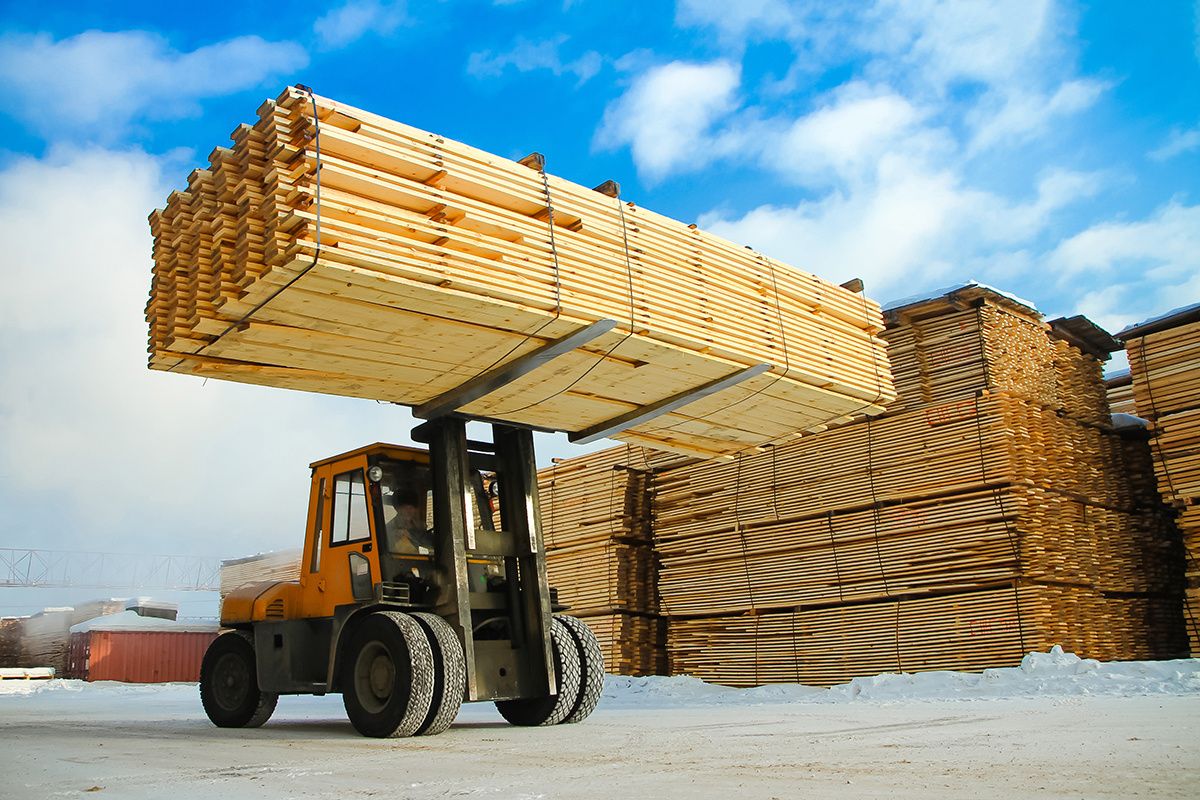Talking to the Source: Conversation with a Lumber Broker

For this blog, Nature’s Packaging reached out to a lumber wholesaler based out of Canada within the Quebec province. The company supplies products to the wooden pallet industry as well as the fence industry.
NP: What does a lumber broker do?
A good lumber broker offers value added to the product: when a mill is down, he should be able to ship from another mill. He can also offer different alternatives such as softwood, aspen, hardwood as well as different grades and dimensions. Most mills are specialized and limited to a certain number of dimensions and species.
By talking to customers in many states and areas, and talking to mills in different areas, the broker has a broad view of what is happening in the market. From the log situation to demand, the broker has a global understanding to share.
Good brokers have a diversified team communicating with hundreds of customers and many suppliers. Different personalities, different contacts, different experiences bring a wider range of perspectives.
Can you tell us what you do on a daily basis?
Our team talks to mills every day. We visit them on a regular basis. We are involved when it is time to look at new equipment so the production meets the customer’s requirements.
We also listen to our customers to match their needs with the mill’s capacity. Our participation in different associations keeps us well informed of the legal changes, the technological improvements, and allows us to network with equipment suppliers and help the mills and customers.
Industrial or lower grade lumber isn’t worth as much as premium grades. Why is it important to the overall lumber market, and particularly for wood pallet and packaging manufacturers?
The mills need to make money. Some cut higher grade logs and produce grade lumber. Some scrag mills produce only pallet grade lumber. SPF and SYP mills produce commodities that represent 80% of their products but the pallet lumber prices can make the difference between a good year and not making it.
It is important to be aware of what is going on in the higher-grade markets because they are directly affecting industrial lumber prices. When premium, #1 & #2 and stud prices are as high as they are today, it forces the builder to use #3 grade that is usually going to the Industrial markets, making availability and prices shift very quickly.
What about logistics and transportation management? Why is this area important to lumber supply?
Customers want “just in time”, they do not want inventories and mills needs cashflow. So scheduling the production, then the shipments to meet customer’s needs is an everyday challenge. Freight costs and availability change with demand and fuel costs.
Respecting the truckers and nurturing good relationships with them is as important as paying fast. Good people, good software, and great relationships are key ingredients to a high-quality logistics program.
The price of lumber has been particularly volatile, lately. What types of events cause such price movement, and what can you, as a lumber supplier, do to help buyers through such times?
COVID has changed our lives. Instead of traveling, we work from home, we cook more, we are building a new fence, a new deck, painting the house, building a shed…so that our “cocoon” is better and we keep busy!
Pallets move the world so your paint comes on a pallet, the screws, and nails for the deck and fence as well as many renovation products. Demand for lumber went up just as many mills were missing workers because of COVID.
Our job has been to work with our customers at trying other species and dimension, changing the ratios of 3 ½’’ vs 5 ½’’ to have a better supply. I cannot share all of our secrets but we have been supplying lumber solutions to many customers.
What are some of the biggest mistakes that customers make when it comes to lumber buying?
Some do not know what their actual cutting costs are and what their waste factor when cutting their own wood. When comparing to pre-cut lumber we can see that price is important, but the waste factor is part of the costs too.
Buying the lowest bidder can be dangerous. It is better to spread a bit and have more diversified sources. Working with a supplier when a problem happens is better than rejecting the load and leaving the other to deal with the problem.
If you could give lumber buyers one or two key takeaways from this interview, what would it be?
Suppliers are as important as customers. I can have all the customers but if I do not have the lumber, I am useless. If I have all the lumber and all the customers, I still need the truckers and they need to be treated with respect too.
Finally, a good broker must be competitive but is not always the cheapest. The team of professionals provides market information, is there to find lumber solutions for you, to bring various mills, species, dimensions, and grades so you can provide the shipping platform solutions your customers need.










